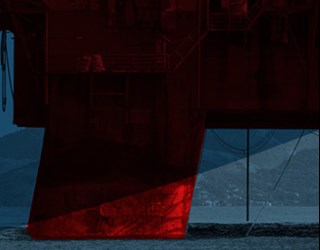CASE STUDY Centek UROS centralizers improve stand-off in washed out hole sections of HPHT well
THE CHALLENGE
Centralizer stand-off can be critical in achieving effective zonal isolation during primary cementing operations. When encountering unconsolidated formations, and when available caliper logs show washed out hole sections on critical high pressure, high temperature wells, it can be a challenge to find the right centralizer product to match the well bore environment.
Running a centralizer at hole gauge will obviously offer less stand-off in washed out areas. Running over gauge centralizers can cause increased drag and possibly not fit through the well bore restrictions of sub surface well heads and the IDs of previous set casings. An operator in Norway in the Gullfaks Sor field faced these very challenges with a previous liner job.
About the well: The previous set casing wellbore was 9 5/8” 53.5ppf casing with 8.535” ID. The casing to be run was 7” casing. There was a machined exit window in the 9 5/8” casing and then the open hole section was drilled with oil based mud to 8 1/2” OD.
The planned well had a total depth of 11,811ft. The well had a maximum deviation of 53 degrees. The customer needed effective zonal isolation and felt, with the results from previous wells, that washed out sections could be compromising zonal isolation performance.
THE SOLUTION
Centek and Halliburton recommended the UROS centralizer in an over gauge casing by open hole design combination over the originally drilled open hole size. For the challenges this well presented, it was suggested to run 7 x 9 1/2”.
The UROS offers the same high performance value as the Centek S2, but with additional benefits. Due to the UROS’s unique off set bow profile, it can fit through tighter restrictions easier due to lower starting forces whilst still providing optimum performance for the hole size it is designed for. This is an advantage of this feature in washed out holes.
Centek performed tests to provide the performance data on the UROS in the 8 1/2” (cased and open hole) and 9 1/2” open hole sections. Halliburton iCEM and Centek Latload modeling were performed to help decide the design would work and casing could get to bottom as planned.
THE RESULT
The 7 x 9 1/2” Centek UROS centralizers were run on the liner as per software placement recommendations. This strategy would give better stand-off in washed out sections and fit through the previous casing ID of 8.535” and in the originally drilled 8 1/2” open hole.
During liner running procedures with the liner at 11,680ft, unfavorable hole conditions were encountered (not related to the centralizers) and the liner had to be pulled from the well. The liner was successfully rotated in the open hole section on the first trip in. On the trip out the liner was rotated in the cased hole section at 20rpm’s for approximately 12 hours.
Once out of the hole, the centralizers were inspected and it was decided that they were in proper condition to be run again. The centralizers showed some signs of point contact wear, some powder coated paint finish was missing, and some set screw sockets on the limit clamps were bent in, but overall they were still able to perform as originally intended.
The Centek stop collars were in their original positions and were in condition to be re-run. The unique Centek high performance, non-welded, bow spring design, enables this re-run situation to take place more times than when typical slip on and hinged welded bow spring designs are utilized. The Centek stop collars are of the same non-welded Centek design and are heat treated for increased integrity and ruggedness.
The 7” liner was re-run and reached TD without any problems. The centralizers had been run 35,351ft on an 11,811ft wellbore design and had gone through an exit window twice and had seen rotation for over 20 plus hours with no damage to the centralizers. The cementing job on the liner was performed as per design. The customer was happy with the results of the centralizer performance and now is planning to use Centek centralizers on future wells.
The Centek UROS single piece construction gives it robustness and strength which exceeds that of competitor products. Although Centek does not recommend the re-use of centralizers after they have been pulled out of hole this case study proves that even when subjected to extreme stresses the unique design of Centek centralizers meant that they remained in good condition and could be re-run.


